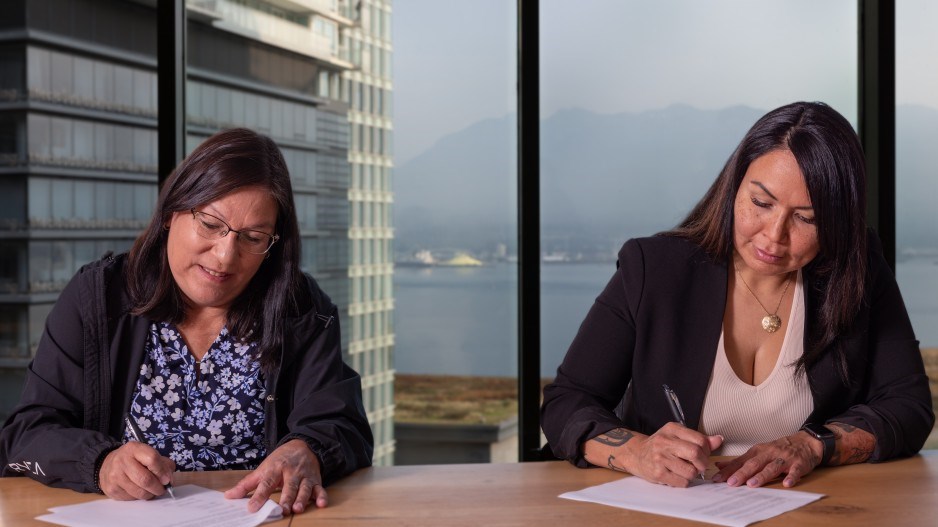For more than a decade, oil and gas companies developing pipelines and liquefied natural gas projects in B.C. have been signing impact benefits agreements with First Nation affected by the projects.
Now, two First Nations developing their own LNG projects – the Haisla and Nisga’a – have signed an agreement with the Halfway First Nation in the Fort St. John area that acknowledges, and attempts to redress, the negative impacts natural gas extraction has on Halfway River First Nation territory.
The three nations have signed a “first of its kind” memorandum of understanding (MOU) that seeks to address the adverse impacts of natural gas extraction and provide opportunities for the Halfway River First Nation to participate in nature-based solutions, like forestry carbon credits, as well as renewable energy and other decarbonisation projects, such as carbon capture and storage and hydrogen production.
“This historic MOU is the first time First Nations governments have formally recognized the upstream/downstream ecological impact of one nation’s economic development activities on another nation’s territories and way of life, and the first time a group of nations have formally committed to working together to find solutions to these impacts,” the signatories say in a joint news release.
Both the Haisla and Nisga’a are developing their own LNG projects. In Kitimat, the Haisla are developing the Cedar LNG project, in partnership with Pembina Pipeline Corp. (TSX:PPL). The Nisga’a are behind the Ksi Lisims project near Prince Rupert, in partnership with Rockies LNG Limited Partnership and Western LNG LLC.
The natural gas to feed these new LNG terminals would come from the natural gas rich region of northeastern B.C. The Halfway River First Nation, northwest of Fort St. John, are among the Treaty 8 First Nations whose territories have been negatively affected by years of natural gas extraction.
"We're not against what they're doing, but let's do it in a safe and carbon-free way that we're not destroying it for our people and our future generations," said Darlen Hunter, chief of the Halfway River First Nation.
Using mechanisms like forestry carbon credits, Hunter said some of the forestry based solutions that the MOU talks about would include "a lot of reclamation using forestry -- trying to put the lands back to as close as we can get to what it was."
The MOU signed between the three First Nations is part of the First Nations Climate Initiative (FNCI).
“For decades, Halfway River First Nation has felt first-hand the devastating impacts of oil and gas projects that have been developed to meet the broader needs of society,” the news release states. “Together, the FNCI nations are creating pathways for environmental and economic reconciliation to address the fact that nations like Halfway River have felt the brunt of heavy industry on their lands, but none of its benefits.”
The First Nations Climate Initiative (FNCI) is an initiative of the Haisla, Metlakatla, and Nisga’a nations.
The FNCI has been submitted to provincial and federal governments and is intended “to enhance federal and provincial government climate policies and programs while contributing to reconciliation with First Nations through economic self-determination and ensuring that First Nations play a central role in the emerging decarbonized economy.”
Broadly, the FNCI seeks to “provide the infrastructure to more rapidly advance a decarbonized economy here in Canada while exporting resources and systems to the countries that will collectively have the largest positive impact on the climate.”
Proposed initiatives in the FNCI include:
- a new forest carbon offset protocol, with “carbon tax dollars” to be invested in forest carbon projects;
- expansion of the 500 kilovolt northwest transmission grid;
- production of low carbon hydrogen from natural gas; and
- tax incentives and government investment in new technologies like direct air carbon capture, and bio‑energy carbon capture and storage projects (BECCS).
“The new Forest Carbon Offset Protocol in British Columbia has the potential to facilitate large scale First Nations led nature‑based solution (NBS) carbon projects in B.C.,” the FNCI states.
Details of the MOU and the FNCI will be discussed at a three-day round table October 18 to 20 in Vancouver.




